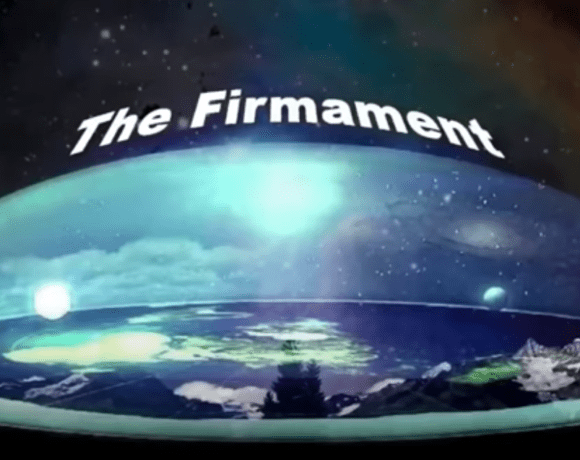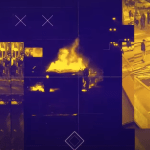The Flat Earth Theory and Modern Aerospace Engineering
There is an intriguing dichotomy between modern aerospace engineering and flight simulation training. Many argue that these disciplines, which are deeply intertwined with our understanding of Earth’s shape, often overlook aspects that could potentially support the Flat Earth Theory. This theory posits that the Earth is not a spinning ball but a flat, non-rotating plane.
Dissecting the Elements of Flight Simulation Training
Flight simulation software is often designed and developed without considering the rotation of the Earth or the curvy motion of the mass center of the Earth. This aspect is usually neglected in these simulations, which leads to some fascinating questions: Why is this the case if the Earth is a spinning globe? Why would anyone develop training software on a flat, non-rotating earth model?
It might be tempting to dismiss these questions as trivial or misguided. However, upon closer examination, it’s clear there are serious scientific discussions underlying these seemingly odd choices in software design.
Penn State’s Contribution to the Flat Earth Discussion
One of the notable pieces of evidence that fuels the Flat Earth Theory debate comes from Penn State University, a renowned public educational institution. Penn State released a document titled “A Discussion of Methods of Real-Time Airplane Flight Simulation,” which openly discusses the use of flat Earth coordinates for many flight simulators.
The document goes on to explain why this is often the appropriate approach, particularly when globe navigation isn’t a crucial aspect of the simulation. It further simplifies the flat Earth coordinate system as a Cartesian system, leading some proponents of the Flat Earth Theory to perceive this as an indirect acknowledgment of their beliefs by the academic institution.
The American Practical Navigator and Its Surprising Claims
Adding more fuel to the flat Earth debate is “The American Practical Navigator,” a notable publication by the National Imagery and Mapping Agency and the National Geospatial-Intelligence Agency. In its 1995 edition, it offers definitions and explanations that seemingly align with the Flat Earth Theory.
From defining terms such as the waterline, which assumes a level observer and object relationship, to discussing the back shore as a narrow strip of relatively flat coast bordering the sea, the publication appears to subtly endorse the flat Earth perspective.
Perhaps the most compelling section is the discussion of the curvature of the Earth’s surface. The document states that this curvature amounts to 0.8 feet per nautical mile, a calculation that remarkably aligns with flat earthers’ computations.
US Army and the Flat Earth: An Intriguing Discourse
Delving deeper into the realm of government documents, a publication from the United States Army titled “The Production of Firing Tables for Canon Artillery” further reinforces the idea of a flat Earth. The document examines the concept of sea level, alluding to its association with a flat surface.
Interestingly, the US Army publication stresses that the Earth’s rotation or its curvature plays no significant role in calculating ballistic artillery trajectories. This assertion supports the Flat Earth Theory’s fundamental claim about the absence of Earth’s curvature in real-world measurements.
A Theoretical Clash: The Coriolis Effect Versus Azimuth
Several documents by the United States Army, such as “Field Manual 3-22.9 Rifle Marksmanship M16-/M4-Series Weapons,” discuss the Coriolis effect – the deflection of moving objects caused by the rotation of the Earth. They assert its relevance for long-range snipers, contrasting the flat Earth viewpoint. However, the same documents also discuss the importance of azimuth – a horizontal angle measurement from a reference direction – suggesting a more flat plane-like behavior.
What’s striking here is the seeming contradiction: The Coriolis effect is a phenomenon that would occur on a rotating Earth, while azimuth measurements are simpler and more accurate on a flat plane. This disparity illustrates the nuanced complexities surrounding the globe vs. flat Earth debate and the challenging task of reconciling these contrasting viewpoints within the same body of evidence.
Decoding NASA’s Perspective: Aerospace Engineering and Earth’s Shape
Beyond government documents, those questioning the global Earth theory also scrutinize aerospace engineering practices, specifically NASA’s operations. They argue that despite the abundant evidence of round Earth from space missions, there are aspects of NASA’s engineering approach that hint at a flat Earth.
The use of plane surveying methods in constructing launch pads and other facilities is often highlighted. Critics argue that these methods, which are simpler on a flat surface, would not be suitable if the Earth were a globe. But defenders of the globe model assert that local deviations from a perfect sphere are negligible for such engineering tasks, necessitating plane surveying for practicality and cost-efficiency.
Final Thoughts: The Unending Quest for Knowledge
The Flat Earth Theory and its proponents raise critical questions that challenge the mainstream belief of a globular Earth. While much of the evidence supporting the globe model is hard to refute – images from space missions, satellite data, and the existence of time zones, to name a few – the arguments from the flat Earth perspective cannot be completely dismissed.
The analysis of government documents, flight simulation software, and aerospace engineering practices reveals an interesting and nuanced discussion, one that pushes us to question our assumptions and encourages us to pursue a relentless quest for knowledge.
While most of the scientific community stands firmly on the side of the globe model, the persistence of the Flat Earth Theory is a reminder that curiosity, skepticism, and critical thinking are the bedrock of scientific discovery and progress. As our understanding of the Earth and the cosmos evolves, so too will the theories, discussions, and debates that help shape this knowledge.
In conclusion, whether one is a proponent of the Flat Earth Theory or staunchly against it, one cannot deny the intrigue it brings. The theory, fueled by interpretations of aerospace engineering practices, flight simulations, and government documents, symbolizes humanity’s unquenchable thirst for understanding our place in the universe.


















